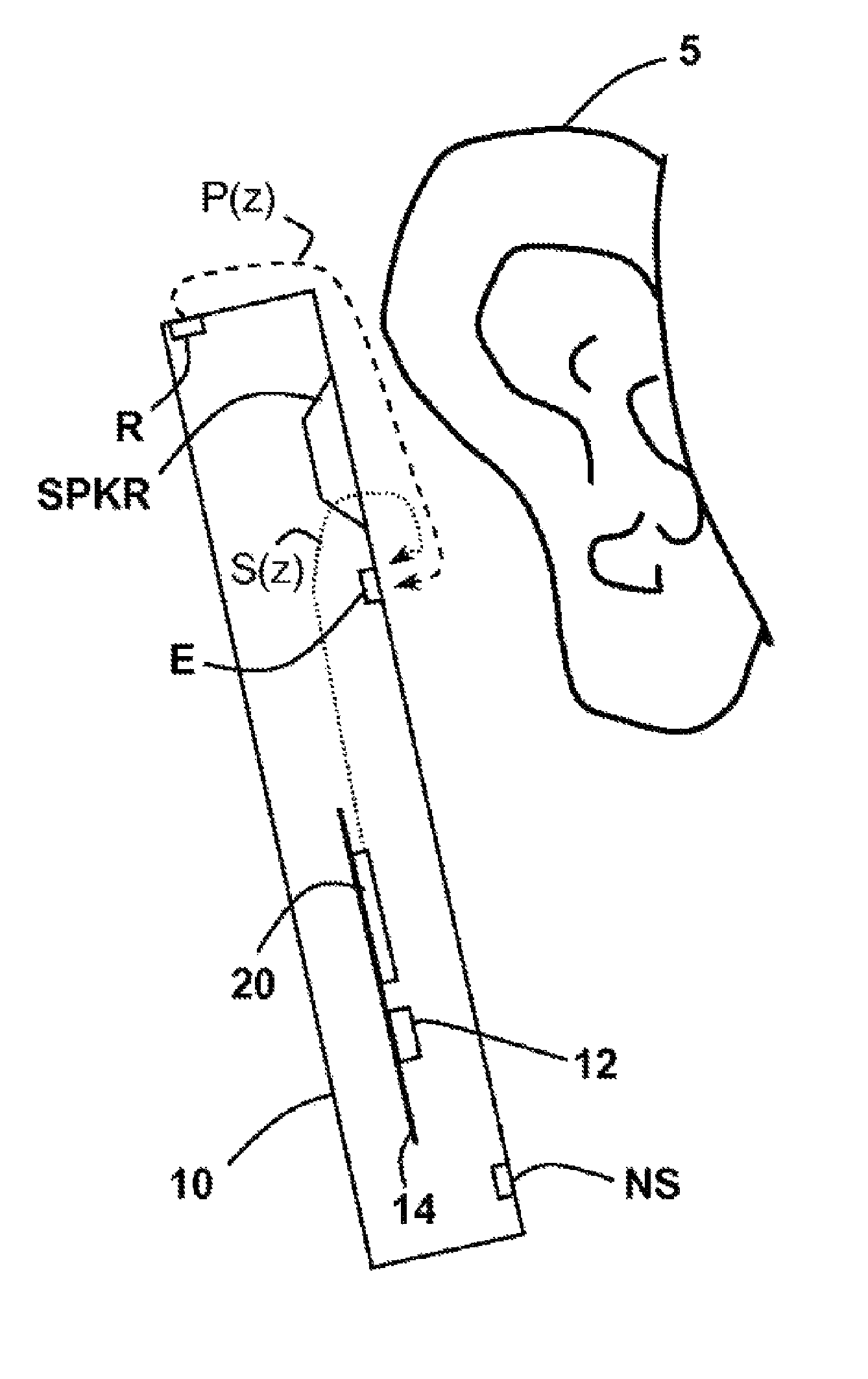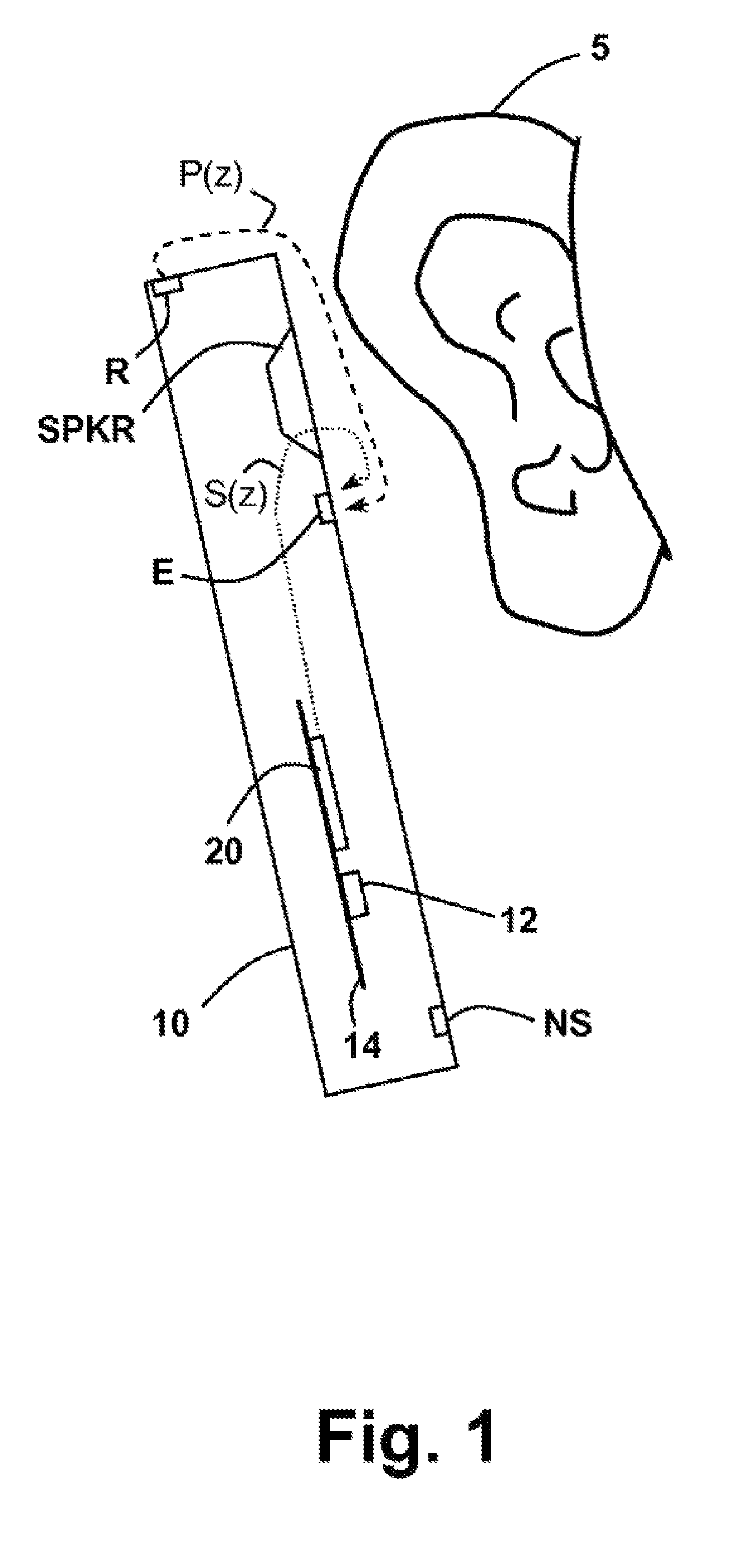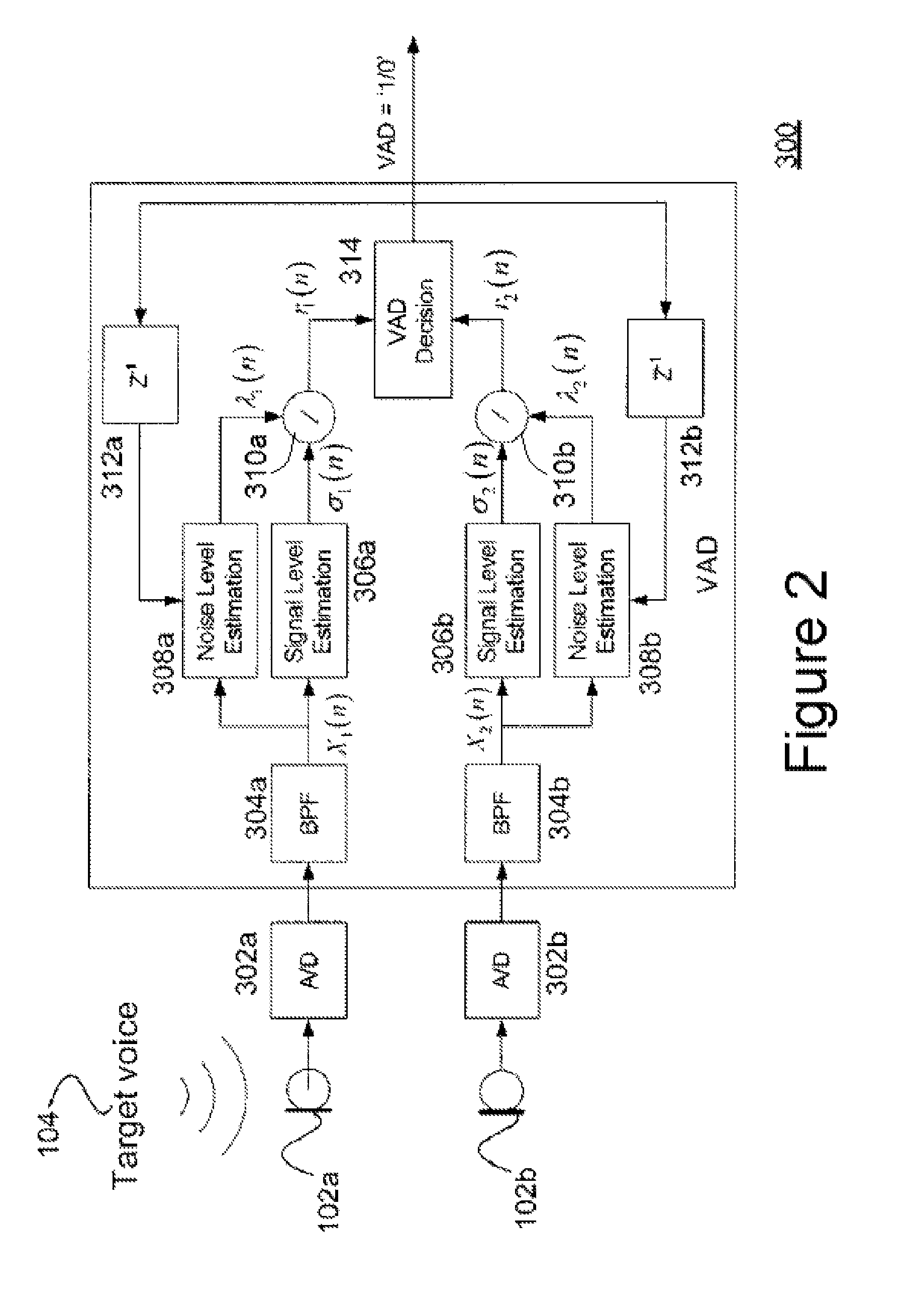Close talk detector for noise cancellation
a detector and talk technology, applied in the field of close, can solve the problems of false trigger of the close talk detector, the failure of the noise cancellation system, and the impulsive ambient noise (non-close talk) to work properly, and achieve the effect of convenient implementation, improved performance and convenient implementation
- Summary
- Abstract
- Description
- Claims
- Application Information
AI Technical Summary
Benefits of technology
Problems solved by technology
Method used
Image
Examples
Embodiment Construction
[0020]FIG. 3 is a diagram illustrating the distance of a close talker from both the dual microphones on a typical cell phone. Referring to FIG. 3, a cell phone 350 is provided with an earpiece speaker 360 on the front side of the panel for the user to hear communications. Cell phone 350 is approximately 10-15 centimeters in height, as represented by reference letter d. Two microphones are provided, as discussed above in connection with FIGS. 1 and 2. A near-speech microphone (NS) 370 designed to pick up the user's voice and ambient background noise is provided at the bottom of the device. A reference microphone 355 is provided at the back of the device to pick up ambient noise levels. In FIG. 3, a “close talker” is represented pictorially by speaker 365, even though the close talker is a person. The close talker may be located at a distance l1 from the near-speech microphone (NS) 370 and a distance l2 from the reference microphone (R).
[0021]If the close talker 365 is close enough, a...
PUM
 Login to View More
Login to View More Abstract
Description
Claims
Application Information
 Login to View More
Login to View More - R&D
- Intellectual Property
- Life Sciences
- Materials
- Tech Scout
- Unparalleled Data Quality
- Higher Quality Content
- 60% Fewer Hallucinations
Browse by: Latest US Patents, China's latest patents, Technical Efficacy Thesaurus, Application Domain, Technology Topic, Popular Technical Reports.
© 2025 PatSnap. All rights reserved.Legal|Privacy policy|Modern Slavery Act Transparency Statement|Sitemap|About US| Contact US: help@patsnap.com



